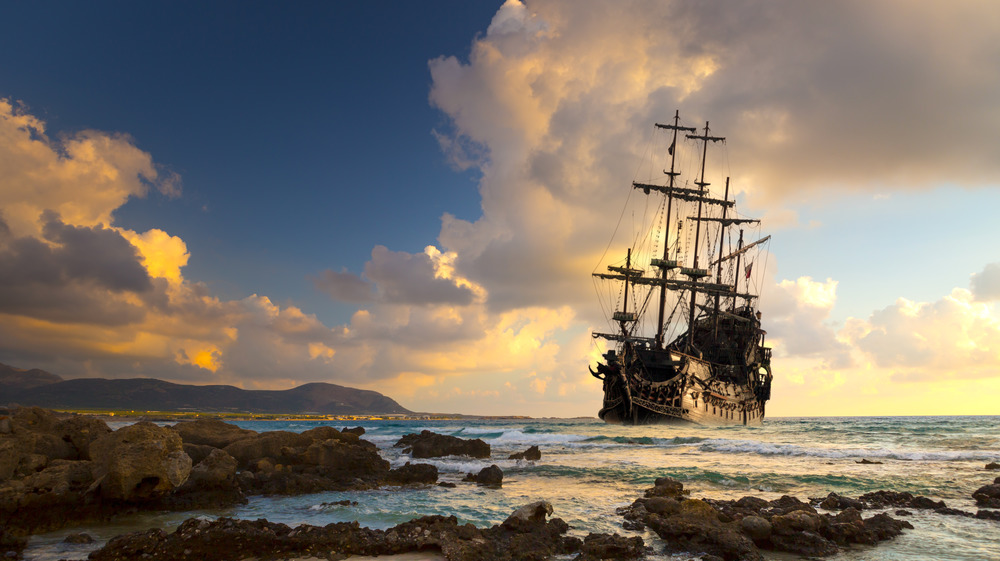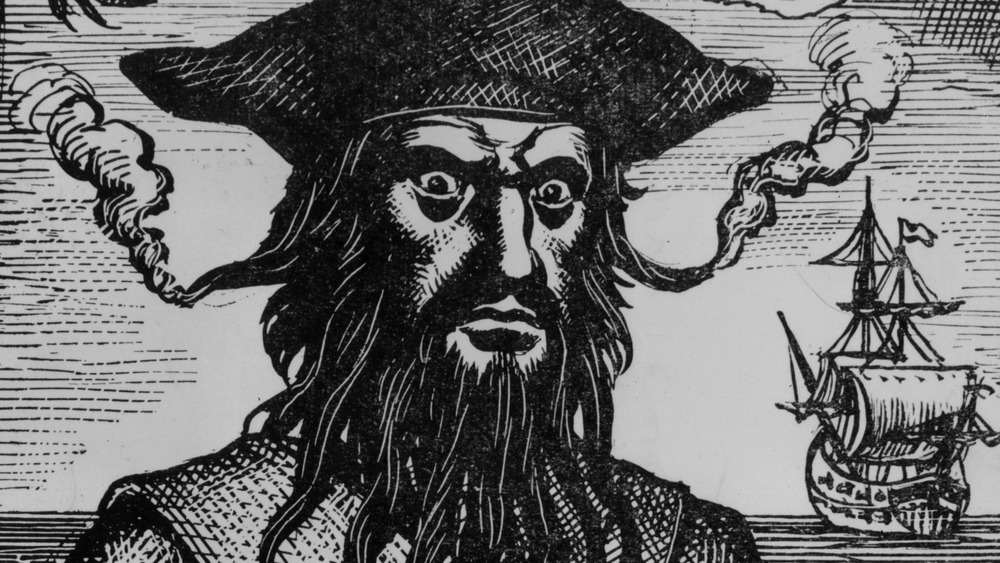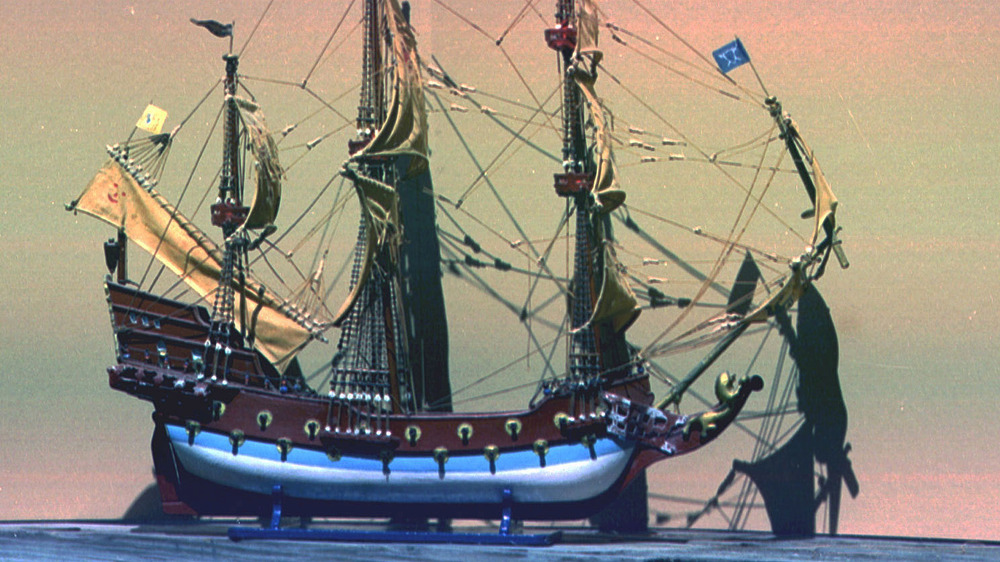The Truth About Blackbeard's Ship, The Queen Anne's Revenge
The dread pirate Blackbeard sailed the seven seas and struck fear into people's hearts. He's the model for many fictional pirates. They copied his look, his accent, and even his ship.
Blackbeard's ship, the Queen Anne's Revenge, was undoubtedly impressive. It had room for 300 men and at least 40 canons. It looked spectacular and weighed almost 200 tons. But the ship also represented how fearsome a pirate Blackbeard was; he stole the boat from the French.
The Queen Anne's Revenge used to be called La Concorde. It functioned as a slave ship, explained the Queen Anne's Revenge Project.
It was owned by the French merchant and slave trader Rene Montaudoin. The ship changed hands a couple of times, and the French Navy took hold of it before turning around and selling it. La Concorde made three expeditions, in 1713, 1715, and 1717. The ship operated out of Nantes and was usually filled with cargo that can be traded for people to be sold as slaves. The ship's trip to Africa usually took two months. The boat then went to the islands of Guadeloupe, Martinique, or Saint Domingue to sell slaves.
On its fateful last voyage, La Concorde was captained by Pierre Dosset and Lieutenant Francois Ernaut. They believed this journey would be much like the two others. The ship left Nantes on March 24, 1717, with a crew of 75 and loaded 16 canons. It reached the coast of Benin, where they took 516 captive Africans.
Capture by Blackbeard
La Concorde saw an arduous journey through the Atlantic. It took longer than expected, about eight weeks, but they were now within 100 miles of Martinique. While crossing the Atlantic, the ship lost 61 slaves and 16 crewmen.
The crew began preparing for landing in Martinique when they saw the flags of Blackbeard.
Ernaut told French officials Blackbeard commanded two ships. One boat had a crew of 120 with 12 canons, and the other had 30 men and eight canons. The University of North Carolina wrote La Concorde did not put up much of a fight; after all, they already had depleted numbers, and most of the people on board were slaves. Blackbeard captured the ship quickly and even retained 10 men to staff his crew, one of which was the ship's cook. The rest were freed, including the slaves in the cargo hold. He kept the gold, of course.
The pirate took a liking to La Concorde, and it became his flagship. He renamed it Queen Anne's Revenge, after Great Britain's Queen Anne. Blackbeard served in the English Navy during Queen Anne's War in the early 1700s.
Blackbeard sailed all over the Caribbean, wrote Smithsonian Magazine, and even captured smaller ships along the way. No doubt the crew in those boats were in awe of this enormous ship now captained by a fearsome pirate.
In May 1718, however, Blackbeard blockaded the Charleston, South Carolina, port demanding medicine. As he fled to North Carolina, the ship ran aground.
It was the center of a lawsuit
With the Queen Anne's Revenge stalled, Blackbeard abandoned it. A few months later, the pirate was killed.
The ship then fell victim to the sea, and it wasn't discovered until 1996, noted National Geographic. It was found by a private company, Intersal, which agreed with the state of North Carolina that it would hold all copyrights to the photos of the ship while the state excavated the wreck.
However, the ship became the center of a copyright lawsuit. In 2015, the state passed a law saying that all images related to the wreck and excavation site belonged to North Carolina. Intersal sued the government, and no work on the area has been done since then.
Per Escapist, the Supreme Court ruled in favor of North Carolina in 2020. While the lawsuit was being decided, artifacts uncovered in the ship were authenticated, and researchers can now say without a doubt that the wreck does belong to the Queen Anne's Revenge. Other objects are still being studied, so historians may start to learn more about the ship, Blackbeard, and piracy.
Blackbeard may have spent only a few months on the Queen Anne's Revenge, but it's been an integral part of his myth, so much that movies even portray the ship.


